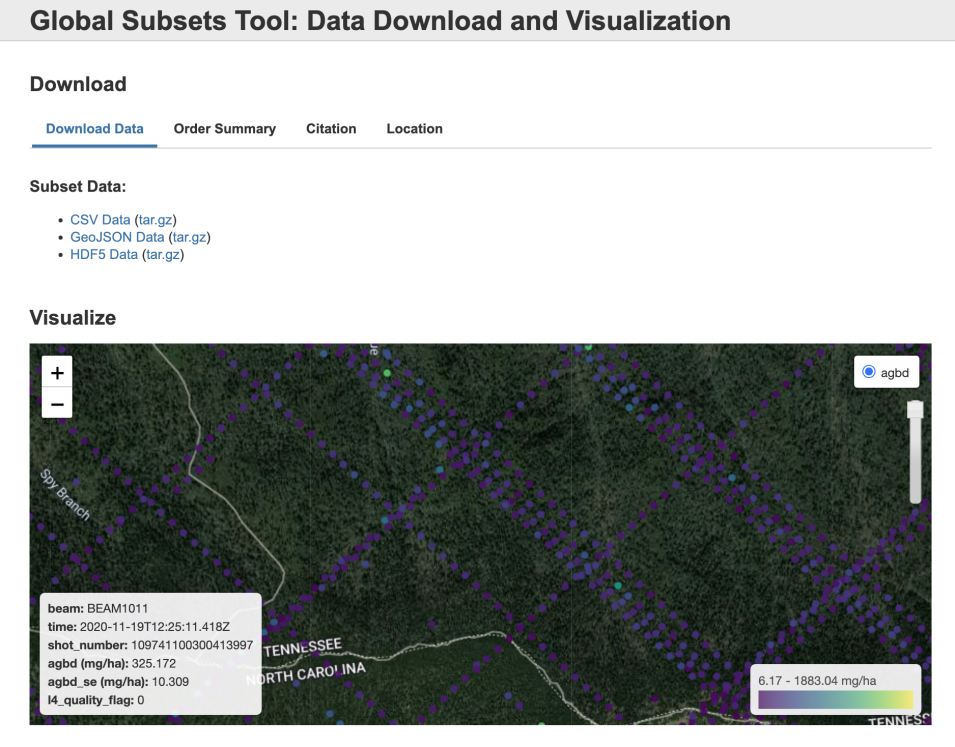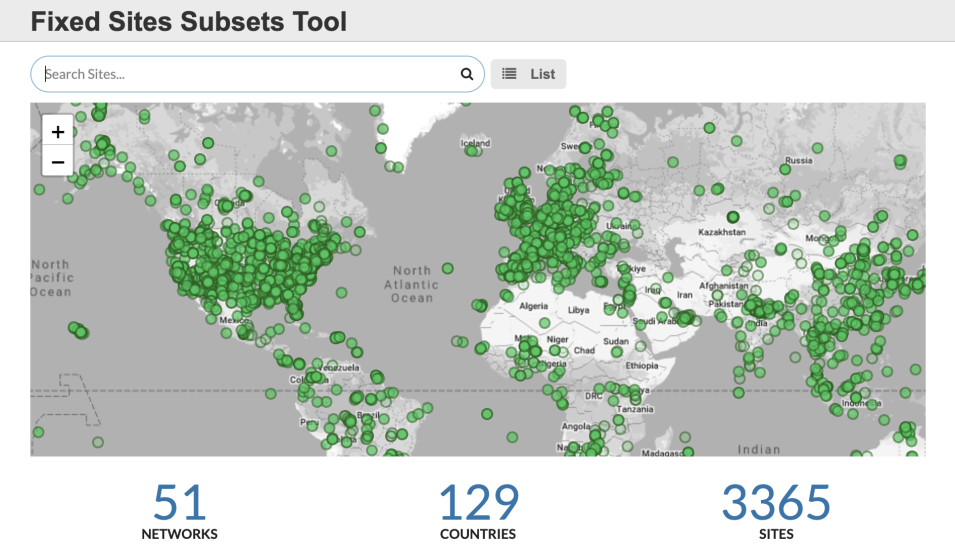Earth science data from satellites and other space-based instruments, such as the Moderate Resolution Imaging Spectroradiometer (MODIS), Visible Infrared Imaging Radiometer Suite (VIIRS), and Global Ecosystem Dynamics Investigation (GEDI), and products from models, such as Daymet, are valuable resources for research in terrestrial ecology. However, the sheer scale of these data products in terms of spatial resolution, temporal frequency, and data volume means that data users must spend a significant amount of time and effort retrieving and processing data before the data can be used for analysis. In addition, the complexity of these data products, including diverse data structure, complex data quality information, and differing file formats, also may be impediments for less experienced data users.
To address these challenges, NASA’s Oak Ridge National Laboratory Distributed Active Archive Center (ORNL DAAC) developed the Terrestrial Ecology Subsetting and Visualization Services (TESViS, formerly known as the MODIS/VIIRS Subsets Tool). TESViS is a suite of integrated, standards-compliant tools and services designed to simplify the process of working with satellite and model-produced data products. It simplifies the download, transformation, visualization, aggregation, and analysis of large datasets and reduces technological barriers for scientists new to working with remotely sensed data.
“TESViS frees users from having to worry about the formats data products come in, some of which can be hard for non-technical users to work with,” said Dr. Rupesh Shrestha, an ORNL DAAC research staff member. “TESViS gives them the data they need in the format they’re comfortable with. This makes the data more accessible and helps users get quickly started toward developing and eventually expanding their scientific workflows.”
TESViS gives users three options for subsetting a range of NASA’s Earth observation data products at useful scales and provides the subsets in easy-to-use formats.
The Global Subsets Tool allows users to request a subset for any location (or locations) on Earth by pinpointing the area on a map or entering its geographic coordinates into the tool’s interface. The size of selected areas may range from a pixel (sub-kilometer) to areas of 201 x 201 km. User requests via the Global Subsets Tool require a wait time for the tool to process, which is usually less than 30 minutes.
When complete, users receive an email containing a URL where they can download the data subset and access interactive visualizations, time series plots of the data, an ASCII file of the pixel values for the selected product (values include quality information and statistics of the subset data for the area), and GeoTiff files that can be imported directly into GIS software. Along with the subset data, the Global Subsets Tool also provides complementary information, such as land cover grid and phenology of the area and an estimate of heterogeneity.

